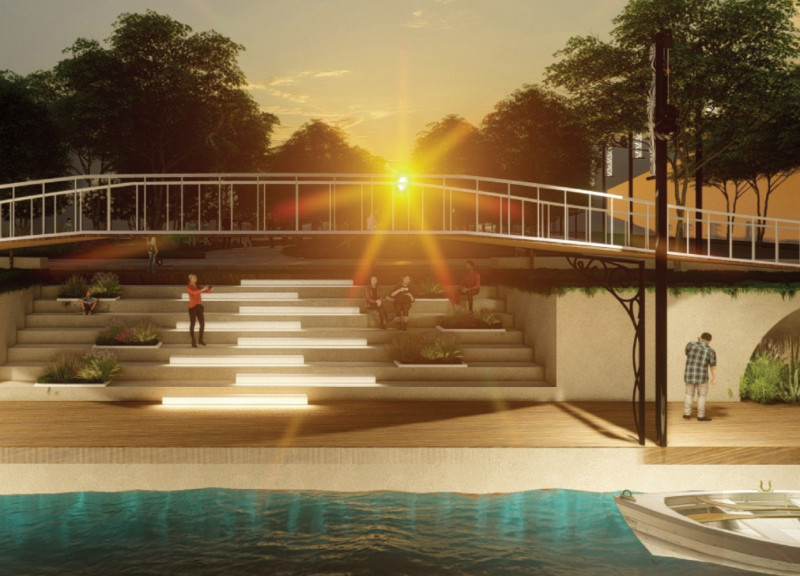5 key facts about this project
The Milan Navigli Canal Redesign is an initiative positioned along the historic Navigli waterways, specifically from Via Senato to Via Marina. This urban effort aims to enhance public access and create spaces for interaction while respecting Milan's cultural heritage. The design focuses on a multi-level canal walkway that accommodates both pedestrians and cyclists, aiming to create a lively urban environment.
Design Concept
The main design approach emphasizes a multi-level walkway that improves movement throughout the area. It features a modular path system incorporating unique textiles inspired by the historic motifs of Milan. This thoughtful design not only enhances functionality but also connects users to the city’s rich history.
Park Plaza Features
The redesigned Park Plaza introduces several zones for various activities, encouraging social interaction. A key element of this project is the elevated bike highway, which provides safe and efficient travel for cyclists. Alongside this highway, a public fountain, influenced by Leonardo Da Vinci's work, acts as both a focal point and a gathering space. The addition of modern greenhouses and picnic areas enhances the recreational aspect of the plaza, making it appealing to both residents and visitors.
Historical Context and Local Commerce
This project recognizes the significant role the Navigli system has played in Milan's history, particularly as a trade route since the 12th century. By including spaces for local vendors, the design aims to promote artisan commerce, contributing to the local economy. This integration allows the project to maintain the relevance of the Navigli while adapting to contemporary needs.
Urban Park Features
The design incorporates multiple open greenhouses, providing shaded areas that encourage relaxation and foster biodiversity in the urban setting. Wayfinding signage draws inspiration from Da Vinci's sketches, improving navigation and enhancing the sense of place. These elements contribute to the overall quality of the canal walkway, promoting a connection between nature and urban life.
The fountain, inspired by Da Vinci’s flying machine, stands out as a key detail in the design. It offers a place for people to pause and engage with the space. The fountain invites both residents and visitors to appreciate and explore this rejuvenated urban environment.























































